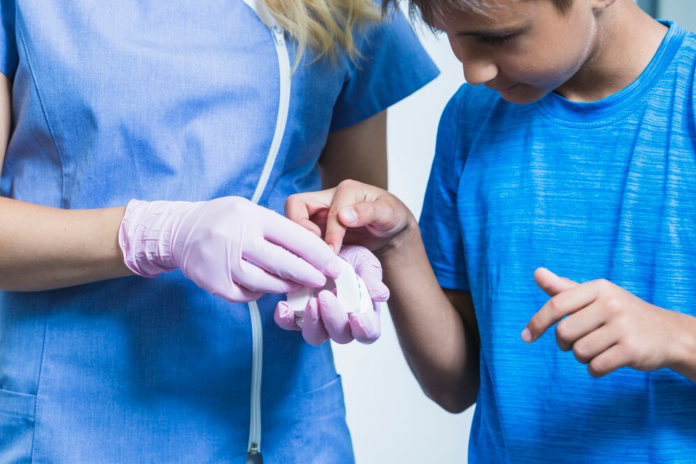Diabetes is a chronic condition that affects millions of people globally. One of the most concerning complications is poor wound healing, especially in the feet. With reduced blood circulation and nerve damage, wounds in diabetic patients often take longer to heal and are prone to infections. Effective treatment strategies are crucial for improving patient outcomes.
Understanding the Challenges of Wound Healing in Diabetes
Patients with diabetes face numerous challenges when it comes to wound healing. High blood sugar levels can delay the body’s natural healing process by affecting immune function. Nerve damage, or neuropathy, makes it difficult for patients to feel pain, which means wounds may go unnoticed until they become severe. Additionally, reduced circulation in the extremities, particularly the feet, limits oxygen and nutrient delivery to the wound, further complicating healing efforts.
The Role of Podiatrists in Diabetic Wound Management
A podiatrist plays a vital role in the care of diabetic patients, particularly in managing foot health. Podiatrists are trained to identify early signs of complications such as ulcers and infections that may otherwise be missed. Regular visits to a podiatrist can prevent small wounds from becoming serious issues. These specialists not only treat wounds but also guide preventive measures such as proper footwear, regular foot inspections, and managing calluses or dry skin.
Innovative Approaches in Diabetic Wound Treatment
Technological advancements have made wound management more effective. One such innovation is the vaporox foot wound treatment service. This service leverages vapor technology to accelerate the healing process by keeping wounds in a moisture-rich environment. Moisture plays a crucial role in healing by reducing pain, promoting cell regeneration, and preventing the formation of scabs that can trap bacteria. Vaporox is particularly beneficial for diabetic patients because it reduces the chances of infection while supporting faster recovery times.
The Importance of Early Intervention
Early intervention is one of the best practices for managing diabetic wounds. The sooner a wound is identified and treated, the higher the chances of avoiding severe complications. For diabetic patients, regular foot inspections should be part of their daily routine. Any cuts, blisters, or redness should be reported to a healthcare provider immediately. Podiatrists can offer regular assessments to monitor foot health, identifying problem areas before they develop into major issues. Early detection combined with advanced treatment options like Vaporox significantly improves healing outcomes.
Combining Treatment Methods for Optimal Results
Treating wounds in diabetic patients often requires a multi-faceted approach. Along with medical treatments like Vaporox, managing diabetes itself is crucial. Controlling blood sugar levels helps the body’s immune system function optimally, which is vital for wound healing. Patients should also maintain a healthy diet and exercise routine to support overall circulation. Compression therapy and wound dressings may also be recommended by a podiatrist to reduce swelling and protect the wound site.
Addressing Infection Risks in Diabetic Wounds
Diabetic wounds are at a higher risk of infection due to compromised immune systems and reduced blood flow. This makes it critical to keep the wound clean and free from bacteria. One of the best practices is to ensure the wound is regularly cleaned and dressed according to the podiatrist’s recommendations. The Vaporox wound treatment service creates a protective barrier against infections, ensuring that the wound remains in an ideal environment for healing while reducing bacterial exposure.

